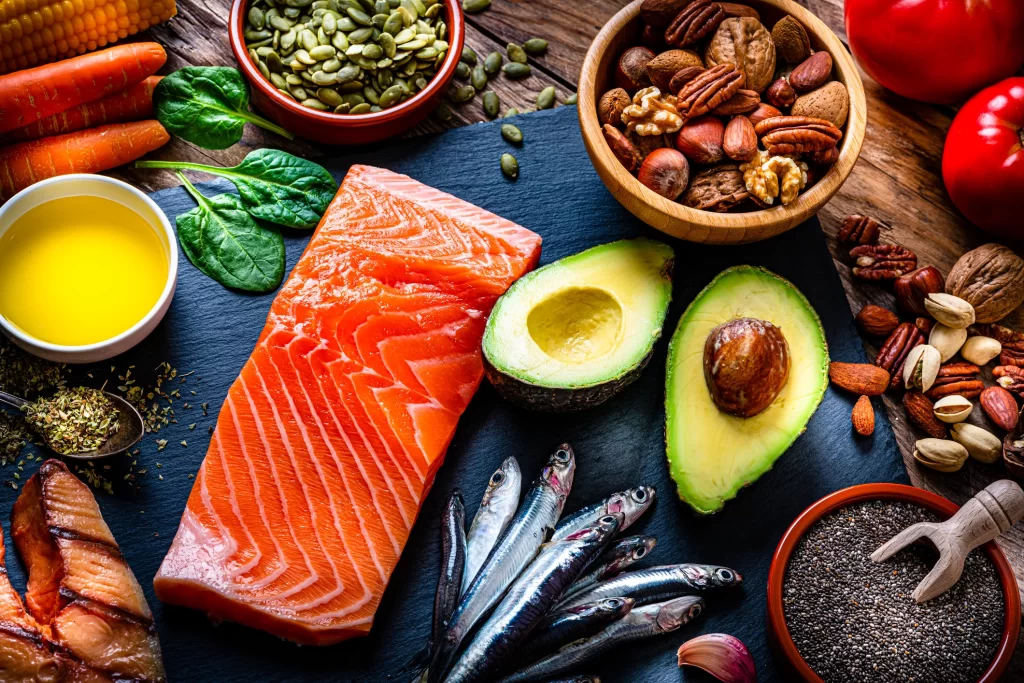Description: Discover 18 foods to naturally lower high blood pressure and promote heart health with simple dietary changes and lifestyle tips.
High blood pressure, or hypertension, is a common yet serious condition that increases the risk of heart disease, stroke, and kidney issues. Managing it through medication is often necessary, but incorporating specific foods into your diet can be an effective, natural approach. Research shows that foods like fruits, vegetables, nuts, and oily fish may significantly reduce blood pressure levels and improve overall health.

This comprehensive guide highlights the 18 best foods to manage high blood pressure and why they work, alongside practical tips for incorporating them into your meals.
What is High Blood Pressure?
High blood pressure occurs when the force of your blood against the walls of your arteries is consistently too high. Normal blood pressure is below 120/80 mmHg. Persistent readings above this threshold may require medical attention and lifestyle changes.
18 Best Foods to Reduce High Blood Pressure
1. Berries
Berries, particularly blueberries and strawberries, are rich in anthocyanins, antioxidants that support healthy blood vessels. Studies suggest regular consumption of berries may reduce systolic and diastolic blood pressure.
- How to Use: Add to smoothies, sprinkle on oatmeal, or enjoy as a snack.
2. Bananas
Packed with potassium, bananas help balance sodium levels and ease tension in blood vessel walls. One medium banana contains approximately 422 mg of potassium.
- How to Use: Enjoy as a snack, slice into cereal, or add to a peanut butter toast.
3. Beets
Beets are high in dietary nitrates, which improve blood flow by relaxing blood vessels. Drinking beet juice has been linked to lower systolic blood pressure.
- How to Use: Add roasted beets to salads or blend into a juice.
4. Dark Chocolate
Dark chocolate contains flavonoids that promote heart health. Opt for varieties with at least 70% cacao for maximum benefits.
- How to Use: Enjoy a small square after meals or mix cocoa powder into smoothies.
5. Kiwis
Rich in vitamin C, kiwis have been shown to reduce blood pressure levels. They are also a refreshing, low-calorie snack.
- How to Use: Slice into salads or blend into a morning smoothie.
6. Watermelon
Watermelon contains citrulline, which helps the body produce nitric oxide to relax blood vessels. It’s also hydrating and refreshing.
- How to Use: Eat fresh slices, add to fruit salads, or enjoy as juice.
7. Oats
Oats are rich in beta-glucan, a type of fiber linked to improved heart health and reduced blood pressure.
- How to Use: Prepare oatmeal for breakfast or use oats as a breadcrumb substitute in recipes.
8. Leafy Greens
Leafy greens like spinach, kale, and Swiss chard are high in nitrates that can lower blood pressure.
- How to Use: Add to soups, stir-fries, or smoothies.
9. Garlic
Garlic contains allicin, a compound with natural blood pressure-lowering effects. It’s also a flavorful salt alternative.
- How to Use: Mince fresh garlic into dishes or use garlic powder in recipes.
10. Fermented Foods
Foods like kimchi, yogurt, and miso are rich in probiotics that support a healthy gut and may help regulate blood pressure.
- How to Use: Incorporate kimchi into meals or enjoy yogurt as a snack.
11. Lentils and Pulses
Lentils are a protein-packed option that benefits cardiovascular health by supporting flexible blood vessels.
- How to Use: Add to soups, stews, or salads.
12. Natural Yogurt
Yogurt is a fermented dairy product that contains calcium and probiotics beneficial for heart health.
- How to Use: Mix with fruits or use as a base for savory dips.
13. Pomegranates
Pomegranate juice is packed with antioxidants and can significantly reduce both systolic and diastolic blood pressure.
- How to Use: Drink fresh juice or sprinkle pomegranate seeds on salads.
14. Cinnamon
Cinnamon has been shown to have modest blood pressure-lowering effects, especially in people with high BMI.
- How to Use: Add to oatmeal, coffee, or baked goods.
15. Nuts
Nuts like pistachios and walnuts are heart-healthy snacks that help manage hypertension when eaten in moderation.
- How to Use: Snack on unsalted nuts or blend into pesto sauces.
16. Citrus Fruits
Oranges, grapefruits, and lemons are rich in vitamin C and antioxidants that support healthy blood pressure levels.
- How to Use: Enjoy as juice or zest lemon over salads and dishes.
17. Oily Fish
Oily fish like salmon and mackerel are rich in omega-3 fatty acids that reduce inflammation and improve blood flow.
- How to Use: Grill or bake fish and pair with leafy greens.
18. Tomato Extract
Tomatoes contain lycopene, an antioxidant that promotes heart health. Tomato extract supplements may offer additional benefits.
- How to Use: Use in sauces, soups, or salads.
Foods to Avoid for High Blood Pressure
- Salt: Limit intake to 2.3 grams daily.
- Processed Foods: Avoid added sugars, fats, and excessive sodium.
- Caffeine: Moderation is key to preventing blood pressure spikes.
- Alcohol: Limit to 1 drink/day for women and 2 drinks/day for men.
FAQs About Foods for High Blood Pressure
1. Can bananas lower blood pressure?
Yes, bananas are high in potassium, which helps balance sodium levels and relax blood vessels, reducing blood pressure.
2. Are fermented foods effective for high blood pressure?
Yes, fermented foods like kimchi and yogurt contain probiotics that improve gut health and may help manage blood pressure.
3. How does beet juice lower blood pressure?
Beet juice contains nitrates that convert into nitric oxide, which relaxes and dilates blood vessels, improving blood flow.
4. What is the best leafy green for high blood pressure?
Spinach is particularly beneficial due to its high nitrate content, which supports blood vessel health.
5. Can eating nuts help manage hypertension?
Yes, nuts like pistachios and walnuts improve blood vessel elasticity and reduce systolic blood pressure.




